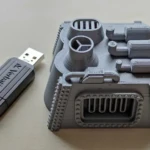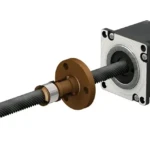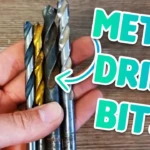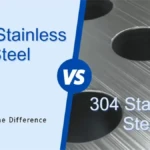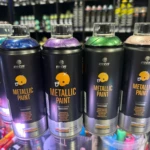Beginner’s Guide to Aluminum CNC Machining: Master the Basics and Beyond
introduce
Aluminum CNC machining is increasingly dominating various industries, offering a combination of lightweight properties, robustness and versatility. As computer numerical control (CNC) technology develops, manufacturers can more easily achieve complex designs with precision and accuracy. This guide will take an in-depth look at the world of aluminum CNC machining, from basic concepts to advanced techniques, ultimately assisting beginners on their journey in the field.
Table of contents
- What is CNC machining?
- Learn about aluminum as a material
- Advantages of aluminum CNC machining
- CNC machining technology
- CNC machine tools commonly used in aluminum processing
- Tools in Aluminum CNC Machining
- CNC Programming: G-Code and M-Code
- Common Applications of Aluminum CNC Machining
- FAQ Troubleshooting
- The future of aluminum CNC machining
- in conclusion
- FAQ
1. What is CNC machining?
CNC machining, or computer numerical control machining, is a manufacturing process in which preprogrammed software controls the movement of machinery and tools. This technology eliminates human intervention in manual operation of the machine. CNC machining is widely used in various industrial applications, especially in the production of high-precision complex parts.
By leveraging CAD/CAM software, engineers can create 2D or 3D designs that can be accurately converted into physical components made from a variety of materials, including metals, plastics and composites. The precision and efficiency of CNC machining make it ideal for modern manufacturing needs, helping companies meet growing demands.
2. Understand aluminum as a material
Due to its good properties, aluminum is one of the most widely used metals in manufacturing. Aluminum has a density of approximately 2.7 g/cm3, making it lightweight and strong. It has an excellent strength-to-weight ratio, is non-corrosive, and has excellent electrical and thermal conductivity.
While pure aluminum is soft and ductile, alloys made by adding other elements such as copper, magnesium and zinc can enhance its strength and achieve different properties suitable for specific applications. The properties of aluminum alloys make them suitable for CNC machining, which can produce parts that are both lightweight and durable.
3. Advantages of CNC machining of aluminum materials
-
Reduce weight: Aluminum is much lighter than steel and other materials, making it cheaper to ship and easier to handle during assembly.
-
Corrosion resistance: Aluminum naturally forms a protective oxide layer that makes it corrosion-resistant, which is critical in industries such as aerospace and automotive.
-
Thermal conductivity: Excellent thermal conductivity allows aluminum to be used in applications such as heat exchangers and radiators.
-
Recyclability: Aluminum can be recycled multiple times without losing its properties, making it a sustainable choice for manufacturers.
- Application Versatility: The wide variety of aluminum alloys has expanded their use in various fields including aerospace, automotive, electronics and consumer products.
4. CNC machining technology
The CNC machining process can be divided into several key steps:
4.1 Design CAD model
The process begins with the creation of a computer-aided design (CAD) model. Designers must develop blueprints that accurately represent component dimensions, geometries, and features.
4.2 Convert CAD to CAM
Once the CAD model is complete, it is converted into a computer-aided manufacturing (CAM) file. CAM software converts the design into G-code, which instructs the CNC machine tool to move.
4.3 Set up the machine
Once the G-code is ready, the operator loads the aluminum workpiece into the machine, preparing the CNC machine. Proper setup includes ensuring that the tool hardware is connected and configured correctly.
4.4 Processing operations
The CNC machine receives the G code and begins the machining operation. The machine’s tools cut, mill or drill the aluminum according to programmed specifications to form the desired part.
4.5 Inspection and quality control
Post-processing inspection involves inspecting the finished part to ensure it meets specified tolerances and quality standards. Any defects discovered at this stage may lead to adjustments to the machining process to achieve the required accuracy.
5. CNC machine tools commonly used in aluminum processing
Commonly used CNC machine tools for aluminum processing include the following:
5.1 CNC milling machine
CNC milling machines are general-purpose machine tools that can perform a variety of operations such as face milling, contour milling, and drilling. They are versatile and suitable for creating complex shapes out of aluminum blocks.
5.2 CNC lathe
CNC lathe is a special machine that relies on cutting tools to rotate workpieces. They are ideal for creating cylindrical parts and features such as threads and grooves.
5.3 CNC milling machine
CNC routers are used to cut large sheets of aluminum. Commonly used in signmaking and furniture manufacturing, they allow for high-speed drilling and cutting.
5.4 CNC wire cutting processing
Electrical discharge machining (EDM) uses electrical sparks to cut complex shapes from aluminum. This method is very effective for complex designs that require high accuracy while minimizing thermal distortion.
6. Tools in aluminum CNC machining
Choosing the right tool is crucial to getting the best results in aluminum CNC machining. Factors to consider include the following:
6.1 Tool materials
Common tool materials include high-speed steel (HSS), carbide and cobalt. Carbide is the preferred choice for aluminum due to its hardness and wear resistance, allowing for faster machining speeds and improved surface finish.
6.2 Tool geometry
The geometry of the cutting tool, such as flutes, rake angle and tool diameter, plays an important role in the efficiency of the machining process. Proper configuration reduces cutting forces and prevents work hardening.
6.3 Coating
Coated tools such as TiN (titanium nitride) or TiAlN (titanium aluminum nitride) can extend tool life and improve performance during machining operations. These coatings reduce friction, prevent built-up edges and resist heat.
7. CNC Programming: G Code and M Code
Programming is an important aspect of CNC machining. G-code and M-code systems control motion and operating commands.
7.1 G-code
G codes are used to define movements and functions such as:
- G00: Quick positioning
- G01: linear interpolation
- G02: Clockwise arc interpolation
- G03: Counterclockwise arc interpolation
These codes specify the path and speed of the cutting tool.
7.2 M code
M codes manage machine-specific functions, such as:
- M00: Program stops
- M03: Spindle on (rotate clockwise)
- M05: Spindle stops
Proper understanding of G-codes and M-codes is essential for effective CNC machining.
8. Common applications of aluminum CNC machining
The versatility of aluminum CNC machining has led to a wide range of applications across a variety of industries, including:
- Aerospace components: Aircraft lightweight structural components, including load-bearing frames and brackets.
- Automotive industry: Engine components, chassis components and body panels that require durability and performance.
- Electronic manufacturing: Housings and heat sinks for electronic equipment that must dissipate heat efficiently.
- consumer goods: Kitchenware, decorative items and sporting goods that take advantage of the aesthetic appeal of aluminum finishes.
9. Troubleshooting common problems
As with any manufacturing process, CNC machining has its challenges. Frequently asked questions include:
9.1 Dimensional accuracy
Ensure workpiece is properly installed and aligned. Regular maintenance of equipment is also critical to maintaining consistent accuracy.
9.2 Surface finish quality
Poor surface finish can be caused by incorrect tool selection or feed rates. Experimenting with speed and checking tool geometry can help resolve these issues.
9.3 Tool wear
Frequent tool wear can be caused by improper speed or feed. Monitor tool condition during operation and replace or sharpen tools as needed.
9.4 Vibration and chatter
These may show up during processing, causing inaccuracies. Adjusting cutting speeds, tool paths, and machine settings may help alleviate this problem.
10. The future of aluminum CNC machining
As technology advances, the future of aluminum CNC machining looks promising. Innovations in areas such as additive manufacturing and automation are paving the way for significant improvements in efficiency and precision. Companies are beginning to explore integrating artificial intelligence into CNC programming, resulting in adaptive machining processes that can learn and adjust to improve results.
In addition, increasing focus on sustainability is leading to greener production methods, increasing the recycling potential and life cycle of aluminum materials.
in conclusion
Aluminum CNC machining is an integral part of modern manufacturing and offers many advantages including being lightweight, corrosion-resistant and adaptable to a variety of applications. By understanding basic processes, tools, programming, and potential challenges, beginners can confidently navigate the complexities of the field.
Continued developments in CNC technology and technology present exciting opportunities for those wishing to explore aluminum machining as a viable career or professional field.
FAQ
Q1: What are the main advantages of using aluminum in CNC machining?
Aluminum’s lightweight and corrosion-resistant properties, coupled with its strength and versatility, make it ideal for a variety of applications in industries including aerospace, automotive and consumer goods.
Q2: How is CNC programming performed?
CNC programming involves creating codes (G-codes and M-codes) that instruct CNC machine tools on how to move and operate during the machining process, ensuring accuracy and consistency in manufacturing.
Q3: What are the commonly used tools for CNC machining of aluminum materials?
Common tools include end mills, drills, lathes, and specialized cutting tools made from materials such as carbide or high-speed steel, with appropriate coatings to improve performance.
Q4: Are there any challenges in CNC machining of aluminum?
Challenges include dimensional accuracy, surface finish quality, tool wear and vibration. Addressing these issues requires proper setup, tool selection, and regular maintenance practices.
Q5: What is the future of aluminum CNC machining?
Future advancements in automation, artificial intelligence, and sustainable practices are expected to lead to more efficient and adaptable manufacturing processes that will further optimize aluminum CNC machining.
This extended guide covers the unique aspects of aluminum CNC machining, providing a comprehensive understanding for beginners and enthusiasts alike. With practical insights and an emphasis on scientific rigor, readers can embark on their processing journey with confidence.
Daguang focuses on providing solutions such as precision CNC machining services (3-axis, 4-axis, 5-axis machining), CNC milling, 3D printing and rapid prototyping services.


